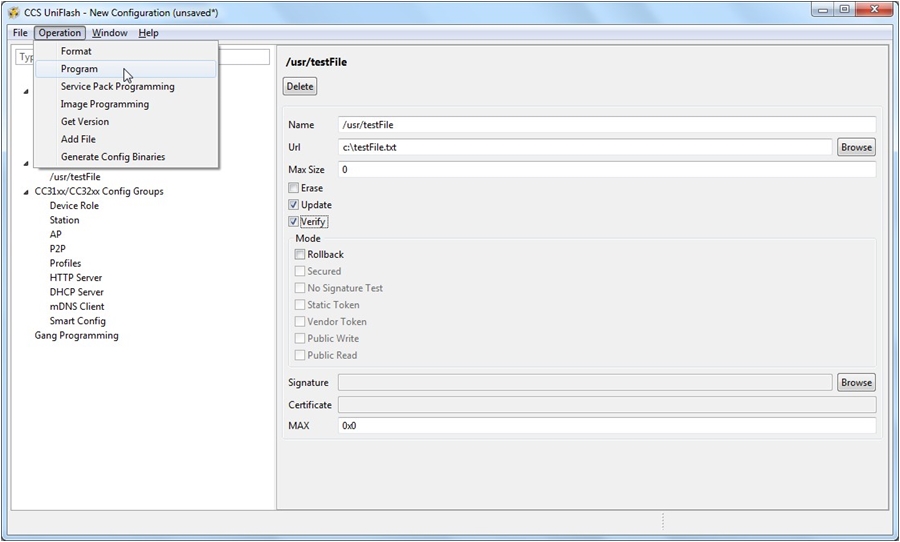SWRU558 June 2020 CC3100 , CC3100MOD , CC3200 , CC3200MOD
-
SimpleLink Wi-Fi CC3100, CC3200 UniFlash
- Trademarks
- 1 Introduction
- 2 Installation
- 3 Prerequisites
- 4 Uniflash Block Diagram
- 5 Session Support
- 6 Secured File System Support
- 7 GUI Interface
- 8 CC3200 Support
- 9 Command Line Support
- 10 Configuration File Support
- 11 Image Creation and Programming
- 12 Troubleshoot/Debugging
- 13 Limitations
- 14 References
- A UART Connection
7.5.2 Non-Secured File Programming
Non secured file programming may be applied on a secured device as well. The only option under 'mode' for a non secured file is rollback option.
The relevant configuration is listed below:
- Name: target file name. System filenames cannot be modified, whereas, user filenames may be modified by the user.
- Mode: nothing is checked, indicates non-secured file. Only rollback may be checked.
- MaxSize: 0 to indicate the original file size. User may configure a file size larger than the original if it is desired to save space for future appending.
- Url: full path where the file is located
- Update checkbox: checked for flashing
- Verify checkbox: checked for flashing verification
 Figure 10. Non-Secure Flashing
Figure 10. Non-Secure Flashing Upon pressing the 'Program' button, the file is flashed. The progress bar is updated frequently and messages are printed on the 'Console' sub screen.